
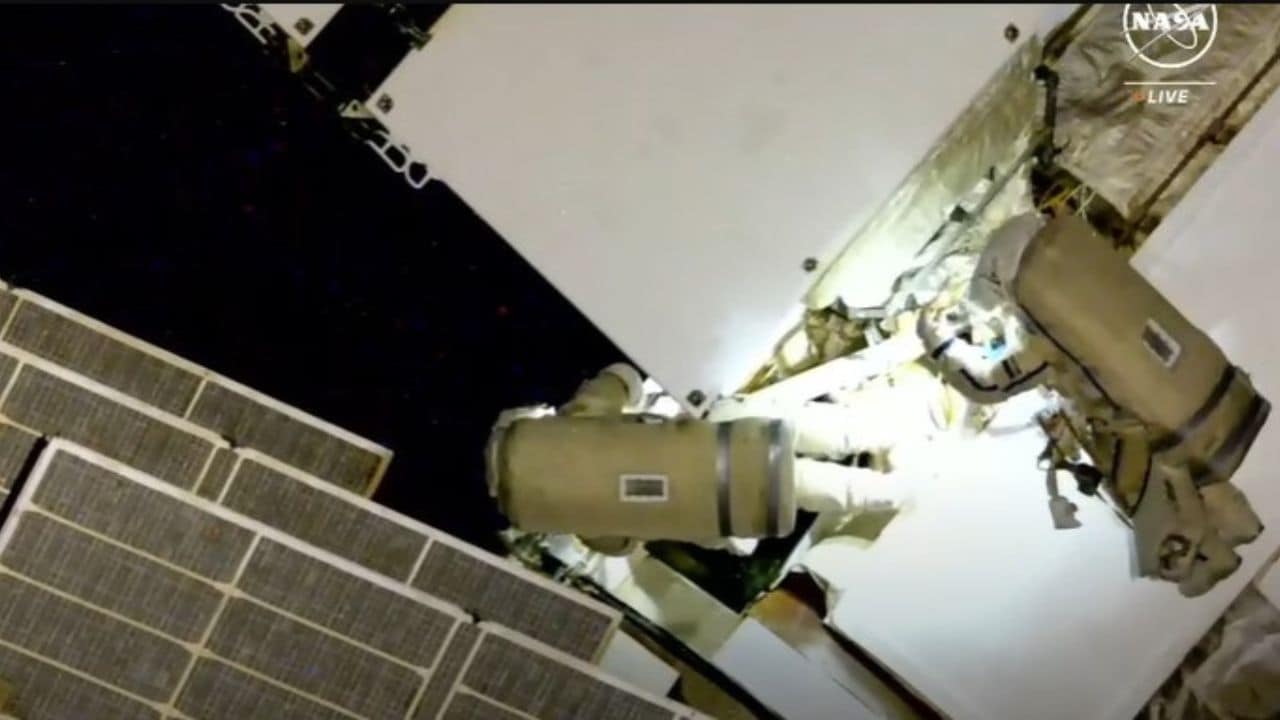
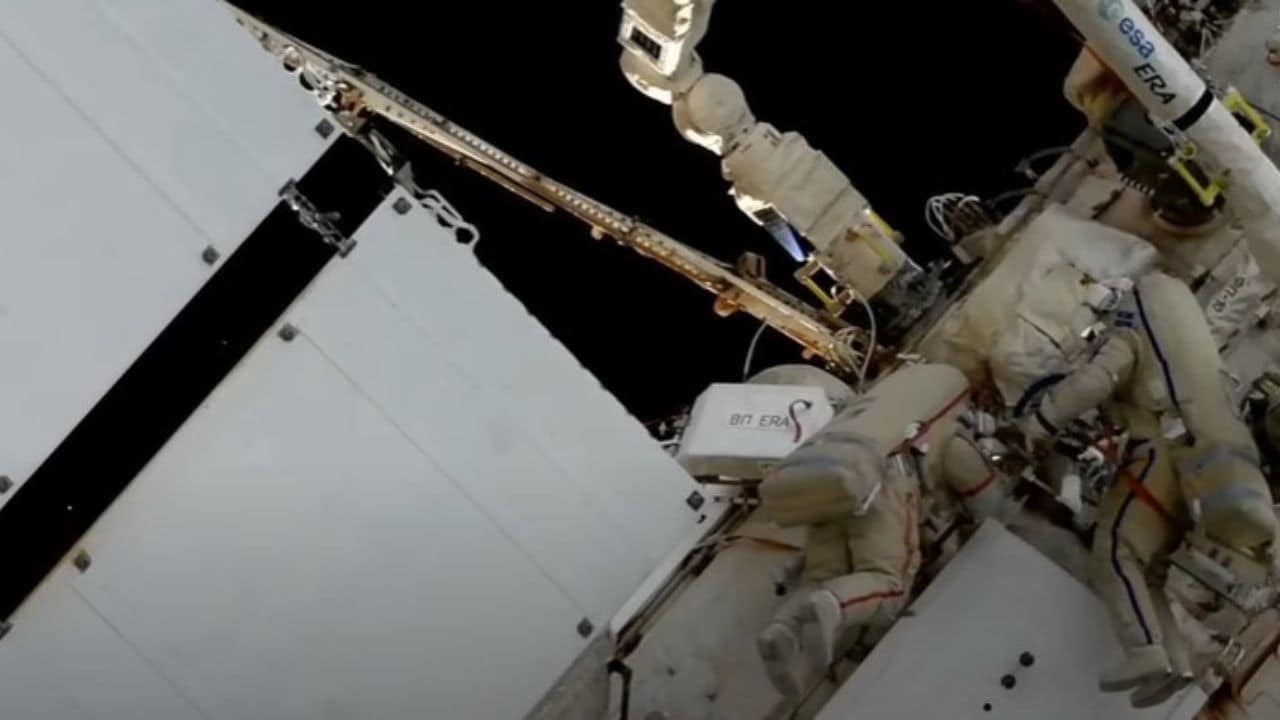
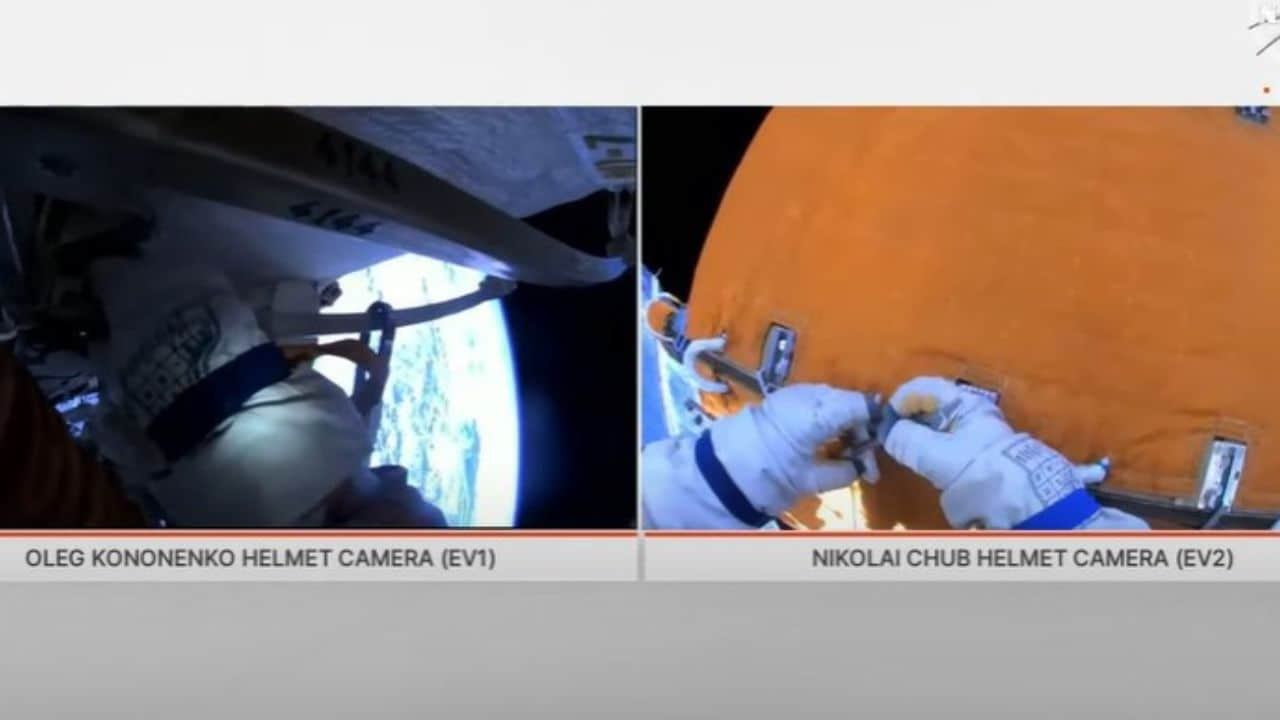
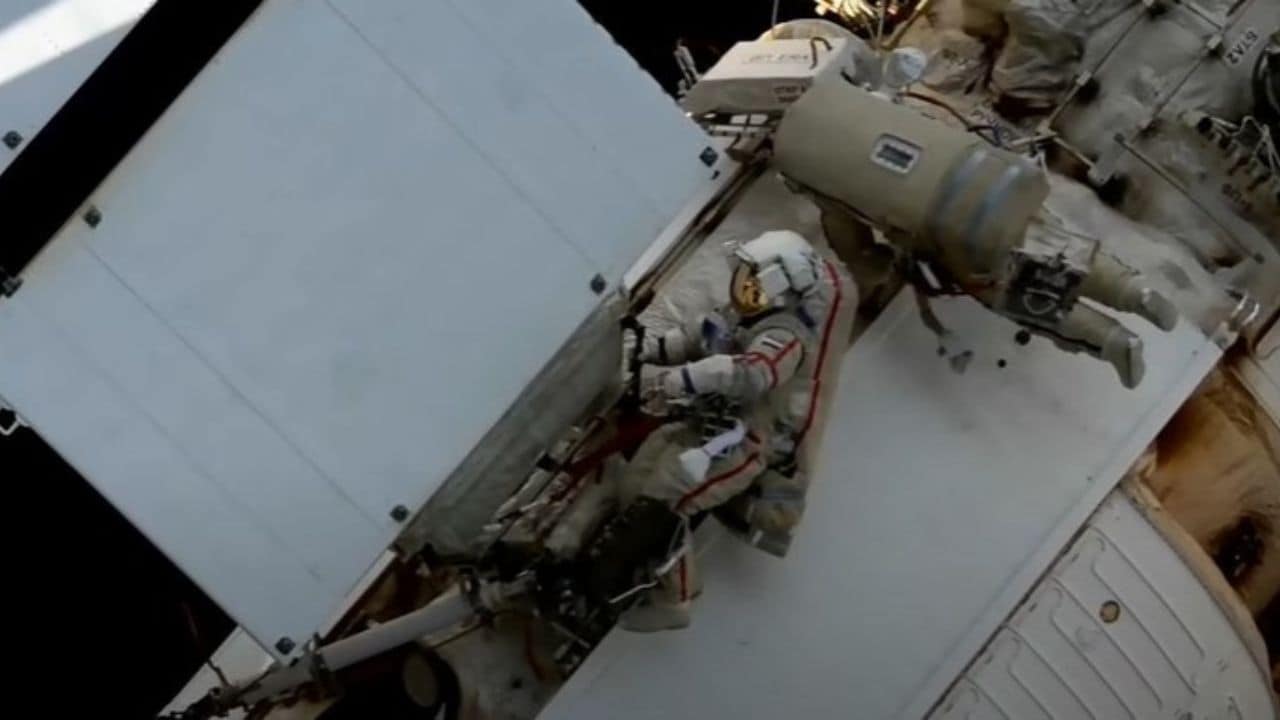
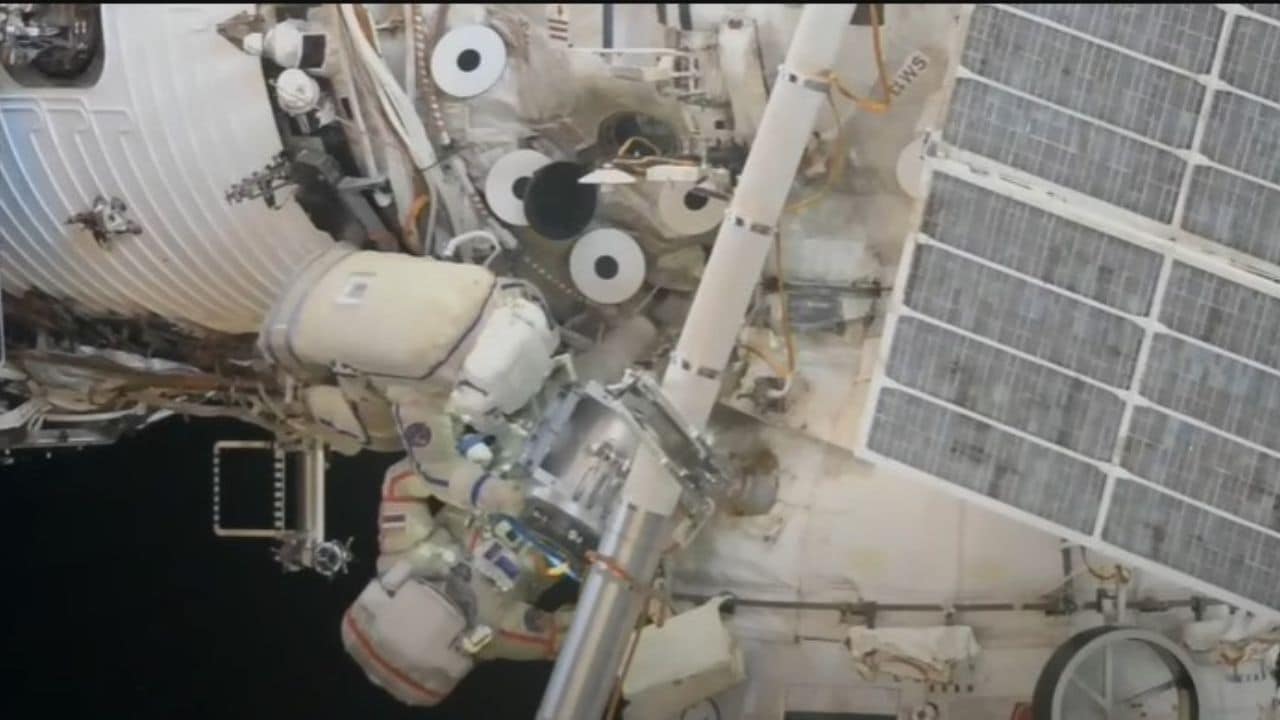
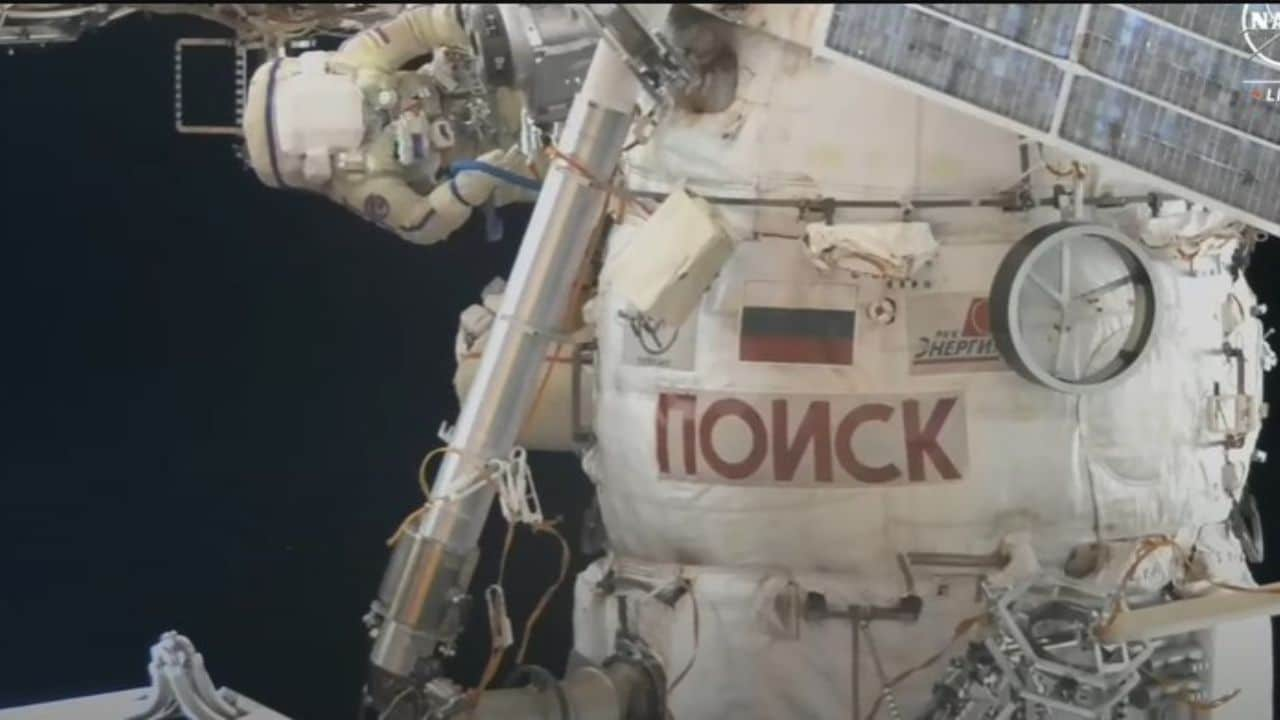







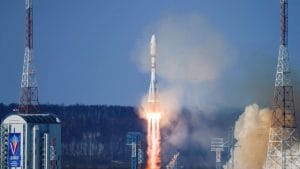

 Listen to the Article (6 Minutes)
Listen to the Article (6 Minutes)
The satellite will be put into orbit around the North and South Poles, synchronized to be in the same fixed position relative to the Sun, and will be fully functional after a calibration of its systems, as per AP.
A Russian rocket on Thursday successfully put an Iranian satellite into orbit, a launch that underlined increasingly close cooperation between Moscow and Tehran.
Russia’s state-run Roscosmos Corporation said that a Soyuz rocket blasted off from the Vostochny launch facility in the country’s far east to carry the Iranian satellite and 18 Russian satellites into orbit.
The Iranian state TV said the 110-kilogram (242-pound) satellite has three cameras to take images for environmental, agricultural and other purposes.
Iran’s state TV said the satellite will be put into orbit around the North and South Poles, synchronized to be in the same fixed position relative to the Sun, and will be fully functional after a calibration of its systems.
Thursday’s launch comes after Russia put into orbit the Iranian Khayyam satellite in 2022.
Iran’s Communication Minister Isa Zarepour told the TV that Iran’s space program has had a total of 23 launches, including 12 during President Ebrahim Raisi’s administration.

Elon Musk forms several ‘X Holdings’ companies to fund potential Twitter buyout
3 Mins Read
Thursday’s filing dispelled some doubts, though Musk still has work to do. He and his advisers will spend the coming days vetting potential investors for the equity portion of his offer, according to people familiar with the matter
 Daily Newsletter
Daily Newsletter


| index | Price | Change |
|---|---|---|
| nifty 50 | ₹16,986.00 | -72.15 |
| sensex | ₹1,882.60 | +28.30 |
| nifty IT | ₹2,206.80 | +30.85 |
| nifty bank | ₹1,318.95 | -14.95 |
| index | Price | Change |
|---|---|---|
| nifty 50 | ₹16,986.00 | -7.15 |
| sensex | ₹1,882.60 | +8.30 |
| nifty IT | ₹2,206.80 | +3.85 |
| nifty bank | ₹1,318.95 | -1.95 |
| index | Price | Change |
|---|---|---|
| nifty 50 | ₹16,986.00 | -72.15 |
| sensex | ₹1,882.60 | +28.30 |
| nifty IT | ₹2,206.80 | +30.85 |
| nifty bank | ₹1,318.95 | -14.95 |
| index | Price | Change |
|---|---|---|
| nifty 50 | ₹16,986.00 | -7.15 |
| sensex | ₹1,882.60 | +8.30 |
| nifty IT | ₹2,206.80 | +3.85 |
| nifty bank | ₹1,318.95 | -1.95 |
| index | Price | Change |
|---|---|---|
| nifty 50 | ₹16,986.00 | -7.15 |
| sensex | ₹1,882.60 | +8.30 |
| nifty IT | ₹2,206.80 | +3.85 |
| nifty bank | ₹1,318.95 | -1.95 |
| Company | Price | Chng | %Chng |
|---|---|---|---|
| Dollar-Rupee | 73.3500 | 0.0000 | 0.00 |
| Euro-Rupee | 89.0980 | 0.0100 | 0.01 |
| Pound-Rupee | 103.6360 | -0.0750 | -0.07 |
| Rupee-100 Yen | 0.6734 | -0.0003 | -0.05 |
Answer Anonymously

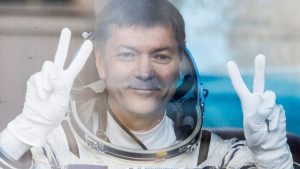

 Listen to the Article (6 Minutes)
Listen to the Article (6 Minutes)
At 8.30 am GMT, Kononenko officially set the new record, with expectations to reach a remarkable 1,000 days in space on June 5. By late September, his total spacefaring days are projected to reach 1,110.
Russian cosmonaut Oleg Kononenko achieved a significant milestone on Sunday, February 4, breaking the world record for the most time spent in space, surpassing his fellow countryman Gennady Padalka, who logged over 878 days in orbit, according to Russia’s space corporation.
At 830 am GMT, Kononenko officially set the new record, with expectations to reach a remarkable 1,000 days in space on June 5. By late September, his total spacefaring days are projected to reach 1,110.

In an interview from the International Space Station (ISS), orbiting approximately 263 miles (423 km) from Earth, Kononenko expressed his passion for space travel, emphasising that his primary motivation is the love for his work rather than setting records.
“I fly into space to do my favorite thing, not to set records,” Kononenko stated to Russian news agency TASS. “I am proud of all my achievements, but I am more proud that the record for the total duration of human stay in space is still held by a Russian cosmonaut.”
The 59-year-old cosmonaut claimed the top spot from Padalka, whose cumulative time in space amounted to 878 days, 11 hours, 29 minutes, and 48 seconds, as reported by Roscosmos.
During the initial stages of the space race, the Soviet Union startled the Western world by achieving two significant milestones. Firstly, in 1957, they were the first to launch the satellite Sputnik 1 into Earth’s orbit, creating a sense of surprise and concern in the West. Subsequently, in 1961, Soviet cosmonaut Yuri Gagarin further intensified the space race by becoming the first human to venture into space.
Despite facing challenges in the aftermath of the Soviet Union’s collapse in 1991, Russia’s space programme has strived to recover from funding shortages and corruption. Russian President Vladimir Putin‘s administration has pledged to revitalise the space initiatives, yet lingering issues persist.
Kononenko, who maintains a rigorous exercise routine to counter the effects of weightlessness, revealed that the true impact of his extended time away from Earth will become apparent upon returning home. He emphasised the missed moments with his family, particularly his growing children. “I do not feel deprived or isolated,” Kononenko remarked.

“It is only upon returning home that the realisation (will) come that for hundreds of days in my absence, the children have been growing up without a papa. No one will return this time to me.”
While advancements in communication technology allow cosmonauts to stay connected with their families through video calls and messaging, Kononenko highlighted the increasing complexity of spaceflight preparations due to technological advancements.
“The profession of a cosmonaut is becoming more complicated. The systems and experiments are becoming more complicated. I repeat, the preparation has not become easier,” he pointed out.
Kononenko’s current mission to the ISS commenced last year aboard Soyuz MS-24. The ISS stands out as one of the limited international ventures where close collaboration between the United States and Russia persists. Notably, in December, Roscosmos announced the extension of a cross-flight programme with NASA to the ISS, ensuring continued joint efforts until 2025.

However, it’s crucial to note that while cooperation thrives in space exploration, relations between the two nations have strained considerably in other realms.
This deterioration traces back to Russia’s invasion of Ukraine nearly two years ago, prompting Washington to respond by providing military support to Kyiv and implementing successive rounds of sanctions against Moscow. The ISS collaboration remains a noteworthy exception amid the broader geopolitical challenges facing the United States and Russia.

Elon Musk forms several ‘X Holdings’ companies to fund potential Twitter buyout
3 Mins Read
Thursday’s filing dispelled some doubts, though Musk still has work to do. He and his advisers will spend the coming days vetting potential investors for the equity portion of his offer, according to people familiar with the matter
 Daily Newsletter
Daily Newsletter


| index | Price | Change |
|---|---|---|
| nifty 50 | ₹16,986.00 | -72.15 |
| sensex | ₹1,882.60 | +28.30 |
| nifty IT | ₹2,206.80 | +30.85 |
| nifty bank | ₹1,318.95 | -14.95 |
| index | Price | Change |
|---|---|---|
| nifty 50 | ₹16,986.00 | -7.15 |
| sensex | ₹1,882.60 | +8.30 |
| nifty IT | ₹2,206.80 | +3.85 |
| nifty bank | ₹1,318.95 | -1.95 |
| index | Price | Change |
|---|---|---|
| nifty 50 | ₹16,986.00 | -72.15 |
| sensex | ₹1,882.60 | +28.30 |
| nifty IT | ₹2,206.80 | +30.85 |
| nifty bank | ₹1,318.95 | -14.95 |
| index | Price | Change |
|---|---|---|
| nifty 50 | ₹16,986.00 | -7.15 |
| sensex | ₹1,882.60 | +8.30 |
| nifty IT | ₹2,206.80 | +3.85 |
| nifty bank | ₹1,318.95 | -1.95 |
| index | Price | Change |
|---|---|---|
| nifty 50 | ₹16,986.00 | -7.15 |
| sensex | ₹1,882.60 | +8.30 |
| nifty IT | ₹2,206.80 | +3.85 |
| nifty bank | ₹1,318.95 | -1.95 |
| Company | Price | Chng | %Chng |
|---|---|---|---|
| Dollar-Rupee | 73.3500 | 0.0000 | 0.00 |
| Euro-Rupee | 89.0980 | 0.0100 | 0.01 |
| Pound-Rupee | 103.6360 | -0.0750 | -0.07 |
| Rupee-100 Yen | 0.6734 | -0.0003 | -0.05 |
Answer Anonymously

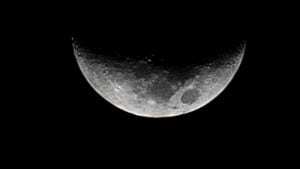

 Listen to the Article (6 Minutes)
Listen to the Article (6 Minutes)
What is with humanity’s fascination with space and more specifically, the moon? CNBC-TV18 speaks to space-exploration expert Dr Scott Pace.
The Moon has always held a fascination for humankind. It has been over five decades since man landed on the Moon and in the years since, many countries — including India — have tried to replicate the effort, primarily through unmanned missions. Chandrayaan-3 is India’s latest attempt to touch the moon, while even Russia, with its Lune-25 mission, attempts to do the same. As the world watches these two missions with anticipation, Dr Scott Pace, an expert in space explorations, speaks to CNBC-TV18 about the rush to the Moon, the challenges of soft landings, lunar explorations, and more.
Pace is Director of the Space Policy Institute and a Professor of the Practice of International Affairs at George Washington University’s Elliott School of International Affairs. He is also a member of the faculty of the Trachtenberg School of Public Policy and Public Administration. His research interests include civil, commercial, and national security space policy, and the management of technical innovation. He rejoined the faculty of the Elliott School in January 2021 after serving as Deputy Assistant to the President and Executive Secretary of the National Space Council from 2017-2020.
Edited excerpts:
Q. Why is there a sudden rush to the Moon? Is it only for national pride or is there something more to it?
A. It has been over 50 years since the last Apollo mission landed on the Moon, so I wouldn’t say the renewed interest in the Moon is “sudden”. The global situation has changed greatly since the Cold War period of Apollo. Today, there are many more countries and many more companies that have space capabilities. The global interest in the Moon reflects the interests of these new actors as well as the traditional spacefaring nations. National pride is a factor, but diplomatic relations, economic growth, scientific curiosity, and the potential to master new technologies are also factors. We are in a new era for space exploration and development.
Q. Why is the Moon unique as a destination to drive global space exploration? What in your opinion is the greatest challenge for a lunar exploration?
A. The United States and its partners demonstrated the ability to maintain a permanent human presence in space with the International Space Station. This presence, however, still depends on support from Earth. As a next step, the United States is seeking to develop the Moon and use it as a proving ground for technologies and processes that will provide greater independence from Earth through extraterrestrial operations. These operations include manufacturing, mining, and conducting cutting-edge lunar science, which will enable the United States and its commercial and international partners to develop cis-lunar space for practical purposes and conduct future human missions to Mars.
The Moon is more than a physical destination. It is essentially humanity’s eighth continent, carved off our planet billions of years ago. It is a means of answering scientific questions, providing space operations with sustaining resources, creating new technical capabilities, training individuals and organizations, and forging new international relationships within a broad and adaptable space infrastructure. The greatest challenge for lunar exploration will be in determining whether humans can live and work usefully in a manner that is increasingly independent of Earth.
Q. Mars or Moon — which is a more habitable destination?
A. The Moon is closer to Earth than any other planetary body, and thus the logistics and transportation systems associated with missions to the Moon are more feasible, both technically and economically, than those required for a direct human mission to Mars. In addition, lunar exploration will reduce overall risks for Mars through the development and demonstration of new space systems necessary to operate on a planetary surface.
In contrast, a present-day human mission to Mars would be exceedingly risky and expensive. With current propulsion capabilities, a one-way journey to Mars requires up to eight months of deep-space travel, with roundtrips exceeding two years. If an emergency occurs during some phases of the flight, it may not be possible for the crew to return safely. Entry, descent, and landing on Mars for heavier crewed vehicles have yet to be demonstrated and will require significant testing and precursor cargo landings prior to the first human mission. The multi-year duration of a Mars mission requires mitigation of harmful effects from radiation and reduced gravity in ways that are not yet fully understood.
Q. Should the private sector play a more aggressive role in space exploration?
A. Both governments and the private sector have crucial roles to play in space exploration. Exploration by itself is expensive and risky so that is where governments can and should lead. When it comes to the practical utilisation of space and the provision of routine services, the private sector can be more innovative, flexible, and efficient. There was a time when only governments could access and use space. Today, the private sector provides space launches, transportation for cargo and crews, communications, remote sensing, and satellite services. Private space platforms are imminent. In the future, there will likely be private space mining and power systems as humans expand their activities beyond low Earth orbit.
This focus on further extending an extraterrestrial human and robotic presence and on the development of commercial space industries makes the Artemis programme much more than a repeat of the Apollo programme. The transition to private sector responsibilities will represent an important step beyond space exploration to development and industrialization.
Q. Why is a soft landing on the lunar poles important?
A. Past missions to the lunar surface have only been to equatorial regions. Access to the polar regions takes more launch energy. In addition, the terrain is more rugged, and lighting conditions are harsher. Lighting is not so important for robotic landers but is a consideration for human pilots. Most importantly, permanently shadowed craters in the polar regions may contain water that can be extracted. If so, the water can be processed into a hydrogen and oxygen propellant, thus lowering reliance on, and the cost of, shipping propellant from Earth.
Q. Are space explorations justified when the world is grappling with hunger and malnutrition?
A. Albert Einstein once said, “The significant problems we have cannot be solved at the same level of thinking with which we created them.” Many problems are human-caused, whether by governments or private actors. They can be solved by political and economic reforms. However, those same problems can often benefit from new knowledge, new technologies, and innovations. Space exploration is the ultimate education programme as it requires the mastery of every scientific and engineering discipline to do it effectively and safely. Space exploration places humans and machines in literally alien environments so as to gain new knowledge that cannot be gained by staying home. Space activity represents a commitment to a hopeful human future.
Some of the most powerful motivations for students to pursue technical degrees are the prospect of being challenged to excel, the opportunity to make a difference in the world, and meaningful participation in a great enterprise. As the United States and its partners educate and engage the “Artemis Generation”, we need to not only describe exciting technical challenges but also to illustrate the opportunities and pathways by which new generations will personally experience and contribute to this singular adventure. The exploration of the Moon and Mars, beginning with the Artemis programme, and stretching forward to the development of the inner Solar System, has the potential to motivate future generations to make that vision of tomorrow a reality.
Follow our live blog for all the latest updates on Chandrayaan-3 and Russia’s Luna-25.

Elon Musk forms several ‘X Holdings’ companies to fund potential Twitter buyout
3 Mins Read
Thursday’s filing dispelled some doubts, though Musk still has work to do. He and his advisers will spend the coming days vetting potential investors for the equity portion of his offer, according to people familiar with the matter
 Daily Newsletter
Daily Newsletter


| index | Price | Change |
|---|---|---|
| nifty 50 | ₹16,986.00 | -72.15 |
| sensex | ₹1,882.60 | +28.30 |
| nifty IT | ₹2,206.80 | +30.85 |
| nifty bank | ₹1,318.95 | -14.95 |
| index | Price | Change |
|---|---|---|
| nifty 50 | ₹16,986.00 | -7.15 |
| sensex | ₹1,882.60 | +8.30 |
| nifty IT | ₹2,206.80 | +3.85 |
| nifty bank | ₹1,318.95 | -1.95 |
| index | Price | Change |
|---|---|---|
| nifty 50 | ₹16,986.00 | -72.15 |
| sensex | ₹1,882.60 | +28.30 |
| nifty IT | ₹2,206.80 | +30.85 |
| nifty bank | ₹1,318.95 | -14.95 |
| index | Price | Change |
|---|---|---|
| nifty 50 | ₹16,986.00 | -7.15 |
| sensex | ₹1,882.60 | +8.30 |
| nifty IT | ₹2,206.80 | +3.85 |
| nifty bank | ₹1,318.95 | -1.95 |
| index | Price | Change |
|---|---|---|
| nifty 50 | ₹16,986.00 | -7.15 |
| sensex | ₹1,882.60 | +8.30 |
| nifty IT | ₹2,206.80 | +3.85 |
| nifty bank | ₹1,318.95 | -1.95 |
| Company | Price | Chng | %Chng |
|---|---|---|---|
| Dollar-Rupee | 73.3500 | 0.0000 | 0.00 |
| Euro-Rupee | 89.0980 | 0.0100 | 0.01 |
| Pound-Rupee | 103.6360 | -0.0750 | -0.07 |
| Rupee-100 Yen | 0.6734 | -0.0003 | -0.05 |
Answer Anonymously

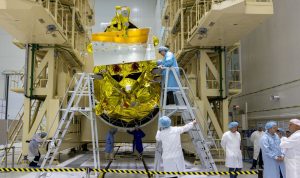

 Listen to the Article (6 Minutes)
Listen to the Article (6 Minutes)
According to the Russian space agency, the Luna-25 mission is planned to operate on the lunar surface for a year, conducting a range of scientific experiments and observations. Roscosmos has even asserted that there is “enough space” on the Moon for both missions and there’s no collision risk between the two spacecraft.
With the goal of exploring the Moon’s south pole, Russia is all set to launch its lunar mission, according to a report. The region is said to be potentially rich in water resources crucial for future human presence on the Moon’s surface. Russia will launch its first lunar landing spacecraft since 1976, on August 11 in a race with India to the south pole of the Moon, a Reuters report said quoting sources.
The Luna-25 spacecraft, Russia’s first lunar landing craft in nearly five decades, is scheduled to launch from the Vostochny cosmodrome, located in the far east of Moscow, according to the report. This launch comes after a delay of nearly two years from its originally planned date in October 2021.
In contrast, India’s Chandrayaan-3 mission, launched on July 14, is due to land on the Moon’s south pole on August 23.
Russia’s expected launch of the lunar mission has now sparked speculations about whether it will beat India to become the first nation to land a rover on the Moon’s south pole.
Russian Space Agency, Roscosmos, in a reply to questions from Reuters, said that its Luna-25 is expected to reach the Moon in five days and spend five to seven days in lunar orbit before descending to one of its designated landing sites. This timeline suggests that the Russian mission might closely match or slightly precede Chandrayaan-3’s arrival on the Moon. The two missions, however, will not be interfering with each other since they have different landing areas planned.
Roscosmos has even asserted that there is “enough space” on the Moon for both missions and there’s no collision risk between the two spacecraft.
The space agency added that the Luna-25 mission is planned to operate on the lunar surface for a year, conducting a range of scientific experiments and observations.
In contrast, Chandrayaan-3 mission is expected to last for two weeks, which suggests that its focus will be on specific experiments during its limited time on the Moon.
Meanwhile, Chandrayaan-3’s successful entry into the Moon’s orbit marked a significant achievement for India’s space agency, ISRO, after a previous attempt ended in failure four years ago. India has been working diligently to address past challenges and ensure a successful mission this time around. ISRO’s chief, S Somanath, has emphasised that engineers have analysed data from the failed mission to rectify glitches and improve the chances of success.

Elon Musk forms several ‘X Holdings’ companies to fund potential Twitter buyout
3 Mins Read
Thursday’s filing dispelled some doubts, though Musk still has work to do. He and his advisers will spend the coming days vetting potential investors for the equity portion of his offer, according to people familiar with the matter
 Daily Newsletter
Daily Newsletter


| index | Price | Change |
|---|---|---|
| nifty 50 | ₹16,986.00 | -72.15 |
| sensex | ₹1,882.60 | +28.30 |
| nifty IT | ₹2,206.80 | +30.85 |
| nifty bank | ₹1,318.95 | -14.95 |
| index | Price | Change |
|---|---|---|
| nifty 50 | ₹16,986.00 | -7.15 |
| sensex | ₹1,882.60 | +8.30 |
| nifty IT | ₹2,206.80 | +3.85 |
| nifty bank | ₹1,318.95 | -1.95 |
| index | Price | Change |
|---|---|---|
| nifty 50 | ₹16,986.00 | -72.15 |
| sensex | ₹1,882.60 | +28.30 |
| nifty IT | ₹2,206.80 | +30.85 |
| nifty bank | ₹1,318.95 | -14.95 |
| index | Price | Change |
|---|---|---|
| nifty 50 | ₹16,986.00 | -7.15 |
| sensex | ₹1,882.60 | +8.30 |
| nifty IT | ₹2,206.80 | +3.85 |
| nifty bank | ₹1,318.95 | -1.95 |
| index | Price | Change |
|---|---|---|
| nifty 50 | ₹16,986.00 | -7.15 |
| sensex | ₹1,882.60 | +8.30 |
| nifty IT | ₹2,206.80 | +3.85 |
| nifty bank | ₹1,318.95 | -1.95 |
| Company | Price | Chng | %Chng |
|---|---|---|---|
| Dollar-Rupee | 73.3500 | 0.0000 | 0.00 |
| Euro-Rupee | 89.0980 | 0.0100 | 0.01 |
| Pound-Rupee | 103.6360 | -0.0750 | -0.07 |
| Rupee-100 Yen | 0.6734 | -0.0003 | -0.05 |
Answer Anonymously



 Listen to the Article (6 Minutes)
Listen to the Article (6 Minutes)
Russia’s Luna-25 spacecraft would take five days to fly to the moon and then spend five to seven days in lunar orbit before descending on one of three possible landing sites near the pole – a timetable that implies it could match or narrowly beat ISRO’s Chnadrayaan 3 to the moon’s surface, according to Reuters.
Russia will launch its first lunar landing spacecraft in 47 years on Friday in a race with India to the south pole of the moon, a potential source of water to support a future human presence there.
The launch from the Vostochny cosmodrome, 3,450 miles (5,550 km) east of Moscow, will take place four weeks after India sent up its Chandrayaan-3 lunar lander, due to touch down at the pole on Aug 23.
Rough terrain makes a landing there difficult, but the south pole is a prized destination because scientists believe it may hold significant quantities of ice that could be used to extract fuel and oxygen, as well as for drinking water.
Russian space agency Roscosmos said in reply to questions from Reuters that its Luna-25 spacecraft would take five days to fly to the moon and then spend five to seven days in lunar orbit before descending on one of three possible landing sites near the pole – a timetable that implies it could match or narrowly beat its Indian rival to the moon’s surface.
‘Space For Everyone’
Roscosmos said the two missions would not get in each other’s way because they have different landing areas planned.
“There is no danger that they interfere with each other or collide. There is enough space for everyone on the moon,” it said.
Chandrayaan-3 is due to run experiments for two weeks, while Luna-25 will work on the moon for a year. In April, Japan’s ispace (9348.T) failed in an attempt to make the first moon landing by a private space company.
With a mass of 1.8 tons and carrying 31 kg (68 pounds) of scientific equipment, Luna-25 will use a scoop to take rock samples from a depth of up to 15 cm (6 inches) to test for the presence of frozen water that could support human life.
“The moon is the seventh continent of the Earth so we are simply ‘condemned’, as it were, to tame it,” said Lev Zeleny, a space researcher at the Russian Academy of Sciences.
The launch, originally planned for October 2021, has been delayed for nearly two years. The European Space Agency had planned to test its Pilot-D navigation camera by attaching it to Luna-25, but broke off its ties to the project after Russia invaded Ukraine in February last year.
Residents of a village in Russia‘s far east will be evacuated from their homes at 7:30 am on Friday because of a “one in a million chance” that one of the rocket stages that launches Luna-25 could fall to earth there, a local official said.
Alexei Maslov told Russian news outlet Business FM that the 26 inhabitants of Shakhtinsky would be taken to a place where they could watch the launch and get a free breakfast, and return within 3-1/2 hours. He said fishermen and hunters in the region had also been warned.

Elon Musk forms several ‘X Holdings’ companies to fund potential Twitter buyout
3 Mins Read
Thursday’s filing dispelled some doubts, though Musk still has work to do. He and his advisers will spend the coming days vetting potential investors for the equity portion of his offer, according to people familiar with the matter
 Daily Newsletter
Daily Newsletter


| index | Price | Change |
|---|---|---|
| nifty 50 | ₹16,986.00 | -72.15 |
| sensex | ₹1,882.60 | +28.30 |
| nifty IT | ₹2,206.80 | +30.85 |
| nifty bank | ₹1,318.95 | -14.95 |
| index | Price | Change |
|---|---|---|
| nifty 50 | ₹16,986.00 | -7.15 |
| sensex | ₹1,882.60 | +8.30 |
| nifty IT | ₹2,206.80 | +3.85 |
| nifty bank | ₹1,318.95 | -1.95 |
| index | Price | Change |
|---|---|---|
| nifty 50 | ₹16,986.00 | -72.15 |
| sensex | ₹1,882.60 | +28.30 |
| nifty IT | ₹2,206.80 | +30.85 |
| nifty bank | ₹1,318.95 | -14.95 |
| index | Price | Change |
|---|---|---|
| nifty 50 | ₹16,986.00 | -7.15 |
| sensex | ₹1,882.60 | +8.30 |
| nifty IT | ₹2,206.80 | +3.85 |
| nifty bank | ₹1,318.95 | -1.95 |
| index | Price | Change |
|---|---|---|
| nifty 50 | ₹16,986.00 | -7.15 |
| sensex | ₹1,882.60 | +8.30 |
| nifty IT | ₹2,206.80 | +3.85 |
| nifty bank | ₹1,318.95 | -1.95 |
| Company | Price | Chng | %Chng |
|---|---|---|---|
| Dollar-Rupee | 73.3500 | 0.0000 | 0.00 |
| Euro-Rupee | 89.0980 | 0.0100 | 0.01 |
| Pound-Rupee | 103.6360 | -0.0750 | -0.07 |
| Rupee-100 Yen | 0.6734 | -0.0003 | -0.05 |
Answer Anonymously



 Listen to the Article (6 Minutes)
Listen to the Article (6 Minutes)
Moscow is reportedly eyeing China and other ‘friendly countries’ to cooperate with for its new space station to explore the moon and deep space.
As Moscow pushes ahead with plans to quit the International Space Station (ISS), the Russian space agency chief has said the ageing ISS is dangerous and unfit for purpose.
In a report, Russian space agency Roscosmos chief Yuri Borisov said mass equipment failures and ageing parts on the space station are endangering the safety of the crew onboard the 24-year-old station.
This comes nearly a month after Russia announced plans to quit the ISS.
“Technically, the ISS has exceeded all its warranty periods. This is dangerous,” Borisov said in a report. “An avalanche-like process of equipment failure is beginning, cracks are appearing,” he added, according to an SCMP report.
Also Read: Android 14 to bring direct satellite connectivity to smartphones
The ISS was launched in 1998 and has been occupied since November 2000 under an American and Russian-led partnership including Canada, Japan, and 11 European countries. The retirement date of the ISS had been moved earlier and now NASA wants to keep it functioning until 2030.
However, Russian-American relations have soured following the invasion of Ukraine which led to a breakdown of diplomatic relations. While the trade relation was disrupted, space cooperation continued until Russia announced plans to quit the ISS after 2024 with plans to launch its own space station.
In August, Russia unveiled a model of its upcoming space station, which would remain open to “friendly nations.” As per reports, Moscow is now eyeing China and other “friendly countries” to collaborate with for the new space station.
Also Read: PwC India looks to hire 10000 tech employees in next 3-4 years
As per a South China Morning Post report, Borisov said, “Russia is looking at how to interact with our closest colleagues, first of all, China,” to pool coordinated efforts to explore the moon and deep space.
Dubbed as the Russian Orbital Space Station (ROSS), the new space station would be launched in two phases. The first phase would see a four-module space station that will start operations and science experimentation. This will be followed by two more modules and a service platform. When completed, the space station will be capable of housing up to four cosmonauts as well as scientific equipment.

Elon Musk forms several ‘X Holdings’ companies to fund potential Twitter buyout
3 Mins Read
Thursday’s filing dispelled some doubts, though Musk still has work to do. He and his advisers will spend the coming days vetting potential investors for the equity portion of his offer, according to people familiar with the matter
 Daily Newsletter
Daily Newsletter


| index | Price | Change |
|---|---|---|
| nifty 50 | ₹16,986.00 | -72.15 |
| sensex | ₹1,882.60 | +28.30 |
| nifty IT | ₹2,206.80 | +30.85 |
| nifty bank | ₹1,318.95 | -14.95 |
| index | Price | Change |
|---|---|---|
| nifty 50 | ₹16,986.00 | -7.15 |
| sensex | ₹1,882.60 | +8.30 |
| nifty IT | ₹2,206.80 | +3.85 |
| nifty bank | ₹1,318.95 | -1.95 |
| index | Price | Change |
|---|---|---|
| nifty 50 | ₹16,986.00 | -72.15 |
| sensex | ₹1,882.60 | +28.30 |
| nifty IT | ₹2,206.80 | +30.85 |
| nifty bank | ₹1,318.95 | -14.95 |
| index | Price | Change |
|---|---|---|
| nifty 50 | ₹16,986.00 | -7.15 |
| sensex | ₹1,882.60 | +8.30 |
| nifty IT | ₹2,206.80 | +3.85 |
| nifty bank | ₹1,318.95 | -1.95 |
| index | Price | Change |
|---|---|---|
| nifty 50 | ₹16,986.00 | -7.15 |
| sensex | ₹1,882.60 | +8.30 |
| nifty IT | ₹2,206.80 | +3.85 |
| nifty bank | ₹1,318.95 | -1.95 |
| Company | Price | Chng | %Chng |
|---|---|---|---|
| Dollar-Rupee | 73.3500 | 0.0000 | 0.00 |
| Euro-Rupee | 89.0980 | 0.0100 | 0.01 |
| Pound-Rupee | 103.6360 | -0.0750 | -0.07 |
| Rupee-100 Yen | 0.6734 | -0.0003 | -0.05 |
Answer Anonymously

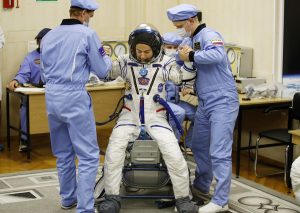

 Listen to the Article (6 Minutes)
Listen to the Article (6 Minutes)
After US President Joe Biden imposed sanctions on Russia for its military operation in Ukraine, head of Russia’s space agency took to Twitter to denounce the constraints, saying it would “destroy” the teamwork between the two countries on the ISS.
The invasion of Ukraine threatens to end the long-standing relations between the US and Russia in space through the International Space Station.
A multinational collaborative project, the International Space Station is a massive space habitat built on the collaboration of five space agencies, including US’ NASA and Russia’s national space agency Roscosmos. It is divided into two sections — the Russian Orbital Segment and the US Orbital Segment. At present, there are four astronauts from NASA, one from Europe and two Russian cosmonauts living and working onboard the orbiting outpost.
After US President Joe Biden imposed sanctions on Russia for its military operation in Ukraine, the head of Russia’s space agency took to Twitter to denounce the constraints, saying it would “destroy” the teamwork between the two countries on the ISS.
“If you block cooperation with us, then who is going to save the ISS from an uncontrolled descent from orbit and then falling onto the territory of the United States or Europe?” Roscosmos director general Dmitry Rogozin tweeted, adding that a 500-tonne structure could fall in India or China as well.
“Do you want to threaten them with this prospect?” Rogozin tweeted.
Responding to Rogozin’s outburst, NASA said it would continue collaborative work with all of its international partners, including Roscosmos, “for the ongoing safe operations of the International Space Station”, Reuters reported.
The Russian segment is powered by electricity on the American side, while the American section depends on propulsion systems on the Russian side, former NASA astronaut Garrett Reisman told CNN. “So, you can’t do an amicable divorce. You can’t do a conscious uncoupling,” Reisman said.
Despite confrontations on land, the ISS has served as a steady beacon of hope for international collaboration between the two superpowers for decades. The charmed life of the ISS program has overcome all sorts of political and technical issues, CNBC quoted Voyager Space president Jeff Manber as saying.
NASA and Roscosmos continued to collaborate on the ISS even after Russia’s invasion of Crimea in 2014. NASA had then sent a memo to its employees asking them to suspend contact with Russian government representatives and restrict travelling to Russia. Dmitry Rogozin, who was then deputy prime minister, was personally sanctioned from entering the US.
Although Manber does not think the Ukraine crisis will jeopardise the partnership, he pointed out that the Russian space agency Roscosmos has not yet renewed its role beyond 2024 while the US was prepared to extend operations to 2030.
Earlier there were reports of NASA administrator Bill Nelson visiting Russia to discuss ISS operations. However, no such trip is currently planned, NASA press secretary Jackie McGuinness told The Verge.
Follow Russia-Ukraine war latest updates on CNBCTV18.com’s blog

Elon Musk forms several ‘X Holdings’ companies to fund potential Twitter buyout
3 Mins Read
Thursday’s filing dispelled some doubts, though Musk still has work to do. He and his advisers will spend the coming days vetting potential investors for the equity portion of his offer, according to people familiar with the matter
 Daily Newsletter
Daily Newsletter


| index | Price | Change |
|---|---|---|
| nifty 50 | ₹16,986.00 | -72.15 |
| sensex | ₹1,882.60 | +28.30 |
| nifty IT | ₹2,206.80 | +30.85 |
| nifty bank | ₹1,318.95 | -14.95 |
| index | Price | Change |
|---|---|---|
| nifty 50 | ₹16,986.00 | -7.15 |
| sensex | ₹1,882.60 | +8.30 |
| nifty IT | ₹2,206.80 | +3.85 |
| nifty bank | ₹1,318.95 | -1.95 |
| index | Price | Change |
|---|---|---|
| nifty 50 | ₹16,986.00 | -72.15 |
| sensex | ₹1,882.60 | +28.30 |
| nifty IT | ₹2,206.80 | +30.85 |
| nifty bank | ₹1,318.95 | -14.95 |
| index | Price | Change |
|---|---|---|
| nifty 50 | ₹16,986.00 | -7.15 |
| sensex | ₹1,882.60 | +8.30 |
| nifty IT | ₹2,206.80 | +3.85 |
| nifty bank | ₹1,318.95 | -1.95 |
| index | Price | Change |
|---|---|---|
| nifty 50 | ₹16,986.00 | -7.15 |
| sensex | ₹1,882.60 | +8.30 |
| nifty IT | ₹2,206.80 | +3.85 |
| nifty bank | ₹1,318.95 | -1.95 |
| Company | Price | Chng | %Chng |
|---|---|---|---|
| Dollar-Rupee | 73.3500 | 0.0000 | 0.00 |
| Euro-Rupee | 89.0980 | 0.0100 | 0.01 |
| Pound-Rupee | 103.6360 | -0.0750 | -0.07 |
| Rupee-100 Yen | 0.6734 | -0.0003 | -0.05 |
Answer Anonymously

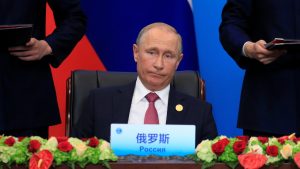

 Listen to the Article (6 Minutes)
Listen to the Article (6 Minutes)
Russia is ready to start building its own space station with the aim of launching it into orbit by 2030 if President Vladimir Putin gives the goahead, the head of its Roscosmos space agency said on Wednesday.
Russia is ready to start building its own space station with the aim of launching it into orbit by 2030 if President Vladimir Putin gives the go-ahead, the head of its Roscosmos space agency said on Wednesday.
The project would mark a new chapter for Russian space exploration and an end to more than two decades of close cooperation with the United States aboard the ageing International Space Station (ISS).
“If in 2030, in accordance with our plans, we can put it into orbit, it will be a colossal breakthrough,” Interfax news agency quoted Roscosmos chief Dmitry Rogozin as saying. “The will is there to take a new step in world manned space exploration.”
Russian cosmonauts have worked with counterparts from the United States and 16 other countries about the ISS since 1998 – one of the closest fields of cooperation between Moscow and Washington, whose relations are currently in deep crisis over human rights, cyberattacks and a range of other issues.
Deputy Prime Minister Yuri Borisov told Russian TV at the weekend that Moscow would give notice to its partners that it would leave the ISS project from 2025.
Rogozin said the Russian station, unlike the ISS, would most likely not be permanently crewed because its orbit path would expose it to higher radiation. But cosmonauts would visit it and it would also use artificial intelligence and robots.
He said Russia was ready to consider allowing foreign crews to visit, “but the station must be national… If you want to do well, do it yourself.”
Interfax quoted an unnamed source as saying that Russia planned to spend up to $6 billion to get the project launched.

Elon Musk forms several ‘X Holdings’ companies to fund potential Twitter buyout
3 Mins Read
Thursday’s filing dispelled some doubts, though Musk still has work to do. He and his advisers will spend the coming days vetting potential investors for the equity portion of his offer, according to people familiar with the matter
 Daily Newsletter
Daily Newsletter


| index | Price | Change |
|---|---|---|
| nifty 50 | ₹16,986.00 | -72.15 |
| sensex | ₹1,882.60 | +28.30 |
| nifty IT | ₹2,206.80 | +30.85 |
| nifty bank | ₹1,318.95 | -14.95 |
| index | Price | Change |
|---|---|---|
| nifty 50 | ₹16,986.00 | -7.15 |
| sensex | ₹1,882.60 | +8.30 |
| nifty IT | ₹2,206.80 | +3.85 |
| nifty bank | ₹1,318.95 | -1.95 |
| index | Price | Change |
|---|---|---|
| nifty 50 | ₹16,986.00 | -72.15 |
| sensex | ₹1,882.60 | +28.30 |
| nifty IT | ₹2,206.80 | +30.85 |
| nifty bank | ₹1,318.95 | -14.95 |
| index | Price | Change |
|---|---|---|
| nifty 50 | ₹16,986.00 | -7.15 |
| sensex | ₹1,882.60 | +8.30 |
| nifty IT | ₹2,206.80 | +3.85 |
| nifty bank | ₹1,318.95 | -1.95 |
| index | Price | Change |
|---|---|---|
| nifty 50 | ₹16,986.00 | -7.15 |
| sensex | ₹1,882.60 | +8.30 |
| nifty IT | ₹2,206.80 | +3.85 |
| nifty bank | ₹1,318.95 | -1.95 |
| Company | Price | Chng | %Chng |
|---|---|---|---|
| Dollar-Rupee | 73.3500 | 0.0000 | 0.00 |
| Euro-Rupee | 89.0980 | 0.0100 | 0.01 |
| Pound-Rupee | 103.6360 | -0.0750 | -0.07 |
| Rupee-100 Yen | 0.6734 | -0.0003 | -0.05 |
Answer Anonymously

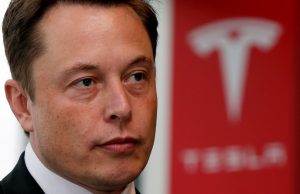

 Listen to the Article (6 Minutes)
Listen to the Article (6 Minutes)
Mocking SpaceX chief executive officer Elon Musk launched a Tesla car into space in 2018, Russian scientists sent their own red car outside the Earth, but the car was actually just a toy.
Mocking SpaceX chief executive officer Elon Musk launched a Tesla car into space in 2018, Russian scientists sent their own red car outside the Earth, but the car was actually just a toy.
In February 2018, SpaceX launched its reusable heavy-lift launch vehicle — Falcon Heavy for the first time along with a cherry-red Tesla Roadster with a mannequin called ‘Starman’ behind the wheel.
In response to Musk’s space stunt, the team from Russia’s Tomsk State University launched a toy replica of the red Zhiguli car owned by Dmitry Rogozin, who serves as the Director General of Russia’s Roscosmos space agency, Futurism reported on Friday.
Rogozin is known for his rivalry with Musk which often comes out publicly as sarcastic banters on micro-blogging site Twitter.
Along with the toy car, the Russian scientists also put a tiny cut-out of a smiling Rogozin in the driver’s seat.
Unlike ‘Starman’, however, the Rogozin replica returned to the Earth and landed an estimated 2,000 kilometres away from its launch site after about 16 hours of flight, the report said.
Russia’s space mockery targeting Musk was executed just days after Rogozin said he would not hire Musk to get help with reusable rocketry.
While Rogozin has not met Musk as yet, he frequently reacts publicly to the SpaceX CEO’s tweets and slams SpaceX over ‘killing competitors’.
Rogozin said he would gladly meet the multi-billionaire if he ever comes to Russia for a private visit.

Elon Musk forms several ‘X Holdings’ companies to fund potential Twitter buyout
3 Mins Read
Thursday’s filing dispelled some doubts, though Musk still has work to do. He and his advisers will spend the coming days vetting potential investors for the equity portion of his offer, according to people familiar with the matter
 Daily Newsletter
Daily Newsletter


| index | Price | Change |
|---|---|---|
| nifty 50 | ₹16,986.00 | -72.15 |
| sensex | ₹1,882.60 | +28.30 |
| nifty IT | ₹2,206.80 | +30.85 |
| nifty bank | ₹1,318.95 | -14.95 |
| index | Price | Change |
|---|---|---|
| nifty 50 | ₹16,986.00 | -7.15 |
| sensex | ₹1,882.60 | +8.30 |
| nifty IT | ₹2,206.80 | +3.85 |
| nifty bank | ₹1,318.95 | -1.95 |
| index | Price | Change |
|---|---|---|
| nifty 50 | ₹16,986.00 | -72.15 |
| sensex | ₹1,882.60 | +28.30 |
| nifty IT | ₹2,206.80 | +30.85 |
| nifty bank | ₹1,318.95 | -14.95 |
| index | Price | Change |
|---|---|---|
| nifty 50 | ₹16,986.00 | -7.15 |
| sensex | ₹1,882.60 | +8.30 |
| nifty IT | ₹2,206.80 | +3.85 |
| nifty bank | ₹1,318.95 | -1.95 |
| index | Price | Change |
|---|---|---|
| nifty 50 | ₹16,986.00 | -7.15 |
| sensex | ₹1,882.60 | +8.30 |
| nifty IT | ₹2,206.80 | +3.85 |
| nifty bank | ₹1,318.95 | -1.95 |
| Company | Price | Chng | %Chng |
|---|---|---|---|
| Dollar-Rupee | 73.3500 | 0.0000 | 0.00 |
| Euro-Rupee | 89.0980 | 0.0100 | 0.01 |
| Pound-Rupee | 103.6360 | -0.0750 | -0.07 |
| Rupee-100 Yen | 0.6734 | -0.0003 | -0.05 |
Answer Anonymously

